What Are the Best Google Ads Tips for New Users to Maximize Success?
Mastering Google Ads tips for beginners transforms advertising complexity into profitable campaigns by guiding new users through each step to reduce waste and boost ROI. New users often struggle with account setup, keyword selection, ad copy, bidding, and performance optimization. This concise guide covers how to set up your first account and campaign, develop keyword strategies, write high-impact ads, choose budgets and bids, and optimize for better return. ElectronicPlayground.com’s Google Ads management services can supplement these tips to accelerate your growth.
How Do You Set Up Your First Google Ads Account and Campaign?
Setting up a Google Ads account means creating a structured advertising framework that captures relevant search queries, which immediately enables budget control and measurable leads. Beginners should follow a clear sequence to establish campaign goals, configure essential settings, and link a billing method for seamless ad delivery. These steps pave the way for targeted reach and early performance insights.
What Are the Essential Steps to Create a Google Ads Account?
To create a Google Ads account, follow this ordered process:
- Sign in to Google or create a Google Account to serve as your Ads login.
- Visit ads.google.com and select “New Account” to initiate setup.
- Define your billing country, time zone, and currency to align costs.
- Link a payment method (credit card or invoicing) to activate ad spend.
- Verify your account via email to unlock full campaign features.
Completing these steps establishes your Ads foundation and leads directly into goal definition for campaign success.
How Do You Define Clear Campaign Goals for Beginners?
Defining campaign goals means choosing objectives—such as lead generation or sales—that guide bidding and creative. Beginners benefit from three primary goal types:
- Leads: Capture contact info via forms or calls.
- Website Traffic: Drive visitors to specific landing pages.
- Sales: Promote e-commerce transactions or product orders.
Aligning your goal with business objectives ensures Google’s automated signals optimize for the right actions and improves early ROI visibility.
Which Initial Settings Should New Users Configure?
Before launching ads, configure these initial settings to match your target audience and budget:
| Entity | Attribute | Value |
|---|---|---|
| Location | Target Region | City, State, Country |
| Language | Communication | English (or business language) |
| Budget | Daily Spend | Your max daily ad investment |
| Bidding | Strategy | Manual CPC or Automated Maximize Clicks |
| Tracking | Conversion Tags | Install global site tag and events |
What Are the Best Keyword Strategies for Google Ads Beginners?
A keyword strategy identifies relevant search terms and match types that attract qualified clicks, which directly reduces wasted spend and increases ad relevance. Beginners need to research effectively, apply match types, and prevent irrelevant traffic through negative keywords.
How Do You Conduct Effective Keyword Research for Google Ads?
Effective keyword research uncovers high-intent terms that your ideal customer uses. Use these steps:
- Open Google Keyword Planner for search volume and competition metrics.
- Brainstorm core product or service terms and expand with long-tail variations.
- Analyze competitor landing pages to identify additional relevant phrases.
- Group keywords into logical ad groups based on shared themes.
This approach ensures your ads target queries most likely to convert and sets the stage for match-type configuration.
Keyword Research and Google Ads
Effective keyword research is crucial for successful Google Ads campaigns, helping to identify high-intent search terms that attract qualified clicks. This process involves using tools like Google Keyword Planner to analyze search volume and competition, brainstorm relevant terms, and group keywords into logical ad groups based on shared themes.
This research supports the article’s guidance on conducting keyword research for Google Ads beginners.
What Are Keyword Match Types and How Should Beginners Use Them?
Keyword match types control how closely a search query must match your keywords. Comparing match types:
| Keyword Match Type | Attribute | Example Usage |
|---|---|---|
| Broad Match | Reach | tennis shoes → tennis shoes review |
| Phrase Match | Relevance | “tennis shoes” → buy tennis shoes |
| Exact Match | Precision | [tennis shoes] → cheap tennis shoes |
Using a mix of match types balances reach and precision, and grouping them helps manage cost and ad relevance.
Why Are Negative Keywords Important for Campaign Success?
Negative keywords block irrelevant or low-value searches that drain budget without conversions. Key benefits include:
- Eliminating mismatched search terms (e.g., “free” if you sell paid services).
- Improving click-through rate by filtering unqualified clicks.
- Raising Quality Score by preventing unrelated impressions.
Incorporating negative keywords sharpens targeting and leads to higher ROI.
How Can New Users Write Compelling Google Ads Copy That Converts?
Compelling ad copy conveys your value proposition and call to action in a few words, which prompts clicks and drives conversions. Focus on benefits, urgency, and clear calls to action to stand out.
What Are the Key Elements of Effective Google Ads Headlines and Descriptions?
Effective headlines and descriptions include these elements:
- Call to Action: Tell users exactly what to do (e.g., “Get a Free Quote”).
- Unique Selling Proposition: Highlight what sets you apart (e.g., “24/7 Support”).
- Keywords: Include top keywords to boost relevance and Quality Score.
Pairing a strong headline with a benefit-driven description increases ad click-through and landing-page engagement.
How Do Ad Extensions Improve Your Google Ads Performance?
Ad extensions add extra information and links to your ads, which increases ad real estate and engagement:
- Sitelinks: Direct users to specific pages like “Pricing” or “Contact.”
- Callouts: Feature details such as “Free Shipping” or “Certified Experts.”
- Structured Snippets: List service categories or product types.
Leveraging extensions enhances ad visibility and improves overall campaign performance.
What Are the Best Bidding and Budgeting Tips for Google Ads Beginners?
Choosing the right bidding strategy and budget ensures your ads deliver value within financial limits, which drives sustainable growth without overspending.
How Do You Choose the Right Bidding Strategy for Your Campaign?
Comparing bidding strategies helps select one that matches your goals:
| Strategy | Attribute | Best For |
|---|---|---|
| Manual CPC | Control | Beginners testing keywords |
| Maximize Conversions | Automation | Driving the most conversions |
| Target CPA | Cost Efficiency | Maintaining consistent cost per lead |
Starting with Manual CPC lets you learn cost dynamics before moving to automated strategies for scaling.
Bidding Strategies in Google Ads
Choosing the right bidding strategy is essential for managing ad spend and achieving campaign goals. Manual CPC offers control for beginners, while automated strategies like Maximize Conversions and Target CPA are suitable for driving conversions and maintaining cost efficiency. The selection of a bidding strategy should align with the specific objectives of the campaign.
This citation provides further information on the bidding strategies discussed in the article.
How Should Small Businesses Set a Realistic Google Ads Budget?
A realistic budget aligns with business size and goals. Consider:
- Monthly Ad Spend: Allocate 5–10% of monthly revenue.
- Industry Benchmarks: Review average CPC and conversion rates in your sector.
- Testing Phase: Reserve 20% of budget for initial testing and optimization.
This framework balances experimentation with controlled investment.
How Can New Users Optimize Google Ads Performance for Better ROI?
Optimizing performance involves improving Quality Score, tracking the right metrics, and leveraging advanced campaign types for efficiency gains.
What Is Google Ads Quality Score and How Can Beginners Improve It?
Quality Score measures ad relevance, expected click-through rate, and landing-page experience, which influences CPC and ad rank.
- Use tightly themed ad groups.
- Incorporate keywords in ad text.
- Ensure landing pages match ad messaging.
A higher Quality Score reduces costs and boosts ad positioning.
Which Metrics Should New Users Track to Measure Campaign Success?
Key metrics reveal campaign health and opportunities:
| Metric | Attribute | Insight |
|---|---|---|
| Click-Through Rate (CTR) | Engagement | Indicates ad relevance |
| Conversion Rate | Effectiveness | Measures percentage of clicks driving actions |
| Cost per Conversion | Efficiency | Shows average spend per conversion |
Monitoring these metrics guides budget shifts and creative refinements.
How Can Beginners Use Performance Max Campaigns Effectively?
Performance Max campaigns use automation and multi-channel placements to maximize reach.
Best practices include:
- Providing diverse assets: images, headlines, and videos.
- Setting clear conversion goals and feeding accurate audience signals.
- Reviewing asset group reports to refine creative performance.
Leveraging Performance Max helps new users achieve broader reach and improved ROI without manual adjustments.
Deploy these foundational tips and consider partnering with ElectronicPlayground.com for expert Google Ads management to accelerate measurable results and sustained growth.
Frequently Asked Questions
What are the common mistakes beginners make with Google Ads?
Beginners often make several common mistakes that can hinder their Google Ads success. These include not defining clear campaign goals, neglecting keyword research, and failing to utilize negative keywords effectively. Additionally, many new users set unrealistic budgets or choose inappropriate bidding strategies, leading to wasted ad spend. It’s also common to overlook the importance of ad extensions and performance tracking, which can significantly impact campaign effectiveness. Learning from these pitfalls can help new users optimize their campaigns more effectively.
How can I improve my Google Ads Quality Score?
Improving your Google Ads Quality Score involves several key strategies. First, ensure your ad groups are tightly themed, which helps maintain relevance between keywords and ad copy. Incorporate targeted keywords into your ad text and ensure that your landing pages align with the messaging in your ads. Additionally, focus on enhancing the user experience on your landing pages, as a better experience can lead to higher engagement and conversion rates. Regularly monitoring and adjusting your campaigns based on performance data is also crucial.
What is the role of ad extensions in Google Ads?
Ad extensions play a vital role in enhancing the visibility and effectiveness of your Google Ads. They provide additional information and links, allowing your ads to occupy more space on the search results page, which can lead to higher click-through rates. Common types of ad extensions include sitelinks, callouts, and structured snippets, each serving to highlight specific aspects of your business. By utilizing ad extensions, you can improve user engagement and provide potential customers with more reasons to click on your ads.
How often should I review and adjust my Google Ads campaigns?
Regularly reviewing and adjusting your Google Ads campaigns is essential for maintaining optimal performance. It’s recommended to check your campaigns at least once a week, focusing on key metrics such as click-through rates, conversion rates, and cost per conversion. This frequency allows you to identify trends, make necessary adjustments, and optimize your budget allocation. Additionally, consider conducting a more in-depth review monthly to assess overall strategy effectiveness and make broader changes based on performance data.
What are the benefits of using Performance Max campaigns?
Performance Max campaigns offer several benefits for advertisers looking to maximize their reach and efficiency. These campaigns utilize automation to optimize ad placements across multiple Google channels, including Search, Display, YouTube, and Discover. By providing diverse assets like images and videos, advertisers can enhance their creative reach. Performance Max also allows for real-time adjustments based on performance data, helping to achieve better ROI without the need for constant manual oversight. This makes it an excellent option for beginners seeking to simplify campaign management.
How can I effectively use negative keywords in my campaigns?
Effectively using negative keywords is crucial for refining your Google Ads targeting and improving ROI. Start by identifying terms that are irrelevant to your business or that attract unqualified traffic. For example, if you sell premium products, you might want to exclude terms like “cheap” or “free.” Regularly review your search term reports to discover new negative keywords that can help filter out unwanted clicks. By strategically implementing negative keywords, you can enhance ad relevance, improve click-through rates, and reduce wasted ad spend.







